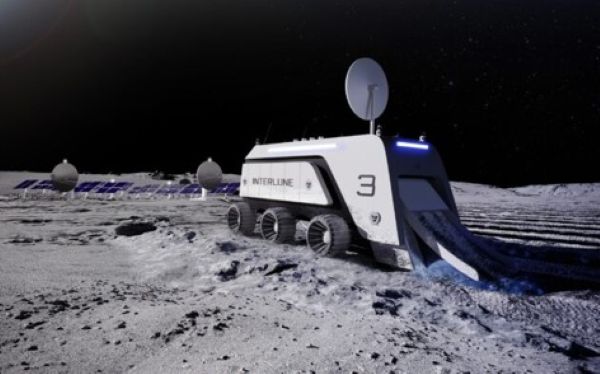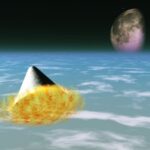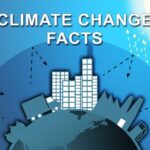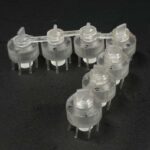When I wrote about advances in energy technology a few days ago, I mentioned Helium-3 as an important fuel for commercial fusion reactors. Today, Helium-3 is harvested in small quantities from nuclear power plants and used in:
- Magnetic Resonance Imaging (MRI) technology, where Helium-3 is ingested into a patient’s lungs to create high-resolution images for diagnosing lung diseases.
- Quantum computing, where it is used as a cryogenic coolant, to keep the hardware at temperatures near absolute zero to maximize quantum coherence and minimize interference or noise that could lead to data and calculation errors.
- Fusion energy reactors where the combination of Helium-3 and Deuterium fusion or Helium-3 to Helium-3 fusion produces, in the case of the former, a Helium-4 nucleus and a high-energy proton with radiation, or in the case of the latter, zero neutron output and no radiation while generating electricity at up to 70% conversion efficiency.
Helium-3 availability on Earth is a trickle. On the Moon, however, it is a flood because in the absence of an atmosphere, the solar wind has been depositing Helium-3 on the lunar surface for billions of years. The estimates of Helium-3 reserves on the Moon vary between 650,000 and 3 million tons. Current Helium-3 reserves here on Earth amount to less than 25 tons. Theoretically, 25 to 30 tons of lunar Helium-3 could fuel nuclear fusion power plants that would provide all the energy the United States consumes in a year.
Mining on the Moon contravenes United Nations treaties. Back in 1967 and again in 1976, led by the United States and the Soviet Union, a treaty outlawed the exploitation of nonterrestrial resources, describing the Moon as a sanctuary of development. A 1979 treaty further reinforced the notion of leaving the Moon in its pristine state, much like international treaties involving Antarctica. Outer space would be reserved for scientific exploration and study, and human activity would be restricted to exploration, and our hands would be clean in the event of an encounter with extraterrestrial intelligent life that is more environmentally conscious.
Have things changed since 1979? Yep! The proliferation of non-scientific satellites in low-Earth and geostationary orbit space today counters the intentions of those who drafted these early outer space treaties. Space is now seen as a place to make profits with constellations of telecommunication satellites circling the globe, and the mining of asteroids, the exploitation of cislunar space and the Moon itself as the next phase in our commercial conquest.
A Seattle-based company, Interlune, founded by a former head at Blue Origin, Rob Meyerson, is one organization that intends to exploit lunar resources for profit. It has recently made several announcements, including:
- A signed contract to supply Helium-3 from the Moon to Maybell Quantum, a quantum infrastructure company, with planned deliveries beginning in 2029.
- A second contract with the U.S. Department of Energy Isotope Program (DOE IP) for the purchase of 25 to 30 tons of lunar Helium-3 with delivery in 2029.
- The unveiling of a lunar excavator prototype for harvesting Helium-3 as seen in the picture at the top of this article.
On the company’s website, Meyerson states :
“For the first time in history, harvesting natural resources from the Moon is technologically and economically feasible. Now we embark on a new era of lunar exploration to create an in-space economy that will sustain humanity for millennia.”
The mining of the Moon won’t stop with Helium-3. The Moon is seen as a vital source of materials, including water, oxygen, metals, rare earth elements, and volatiles. The lunar soil, called regolith, is also being simulated here on Earth to see if it can be used in basic construction to replace Earthly concrete.
One reason to land America’s return-to-the-Moon Artemis Mission near the lunar south pole is to place the landings close to where these material resources are easily obtained. The shadowed craters of the polar region are believed to house ice, which can be turned into water. Water can be used for radiation shielding, drinking, and when split into breathable oxygen and hydrogen fuel.
The regolith, in addition to being a good building material for habitat, road and landing pad construction, is a rich source of essential materials including oxides (breathable air and rocket fuel), iron, titanium, aluminum, rare earth elements, ammonia, methane, carbon dioxide and carbon monoxide.
Where Meyerson wants to harvest Helium-3 and export it from the Moon to Earth, these other valuable materials would be assigned for In Situ Resource Utilization (ISRU). ISRU is front and centre for NASA in its plans to establish a permanent human presence on the Moon and later on Mars.
ISRU means that critical materials launched by rockets from Earth would no longer be required. Drawing on in-situ lunar resources for life support, energy production, propellant, and construction, however, replaces all those good intentions described in the outer space treaties of the late 20th century. We are no longer interested in preserving the pristine nature of the “off-worlds” humans encounter, but rather, in their exploitation and profits.









